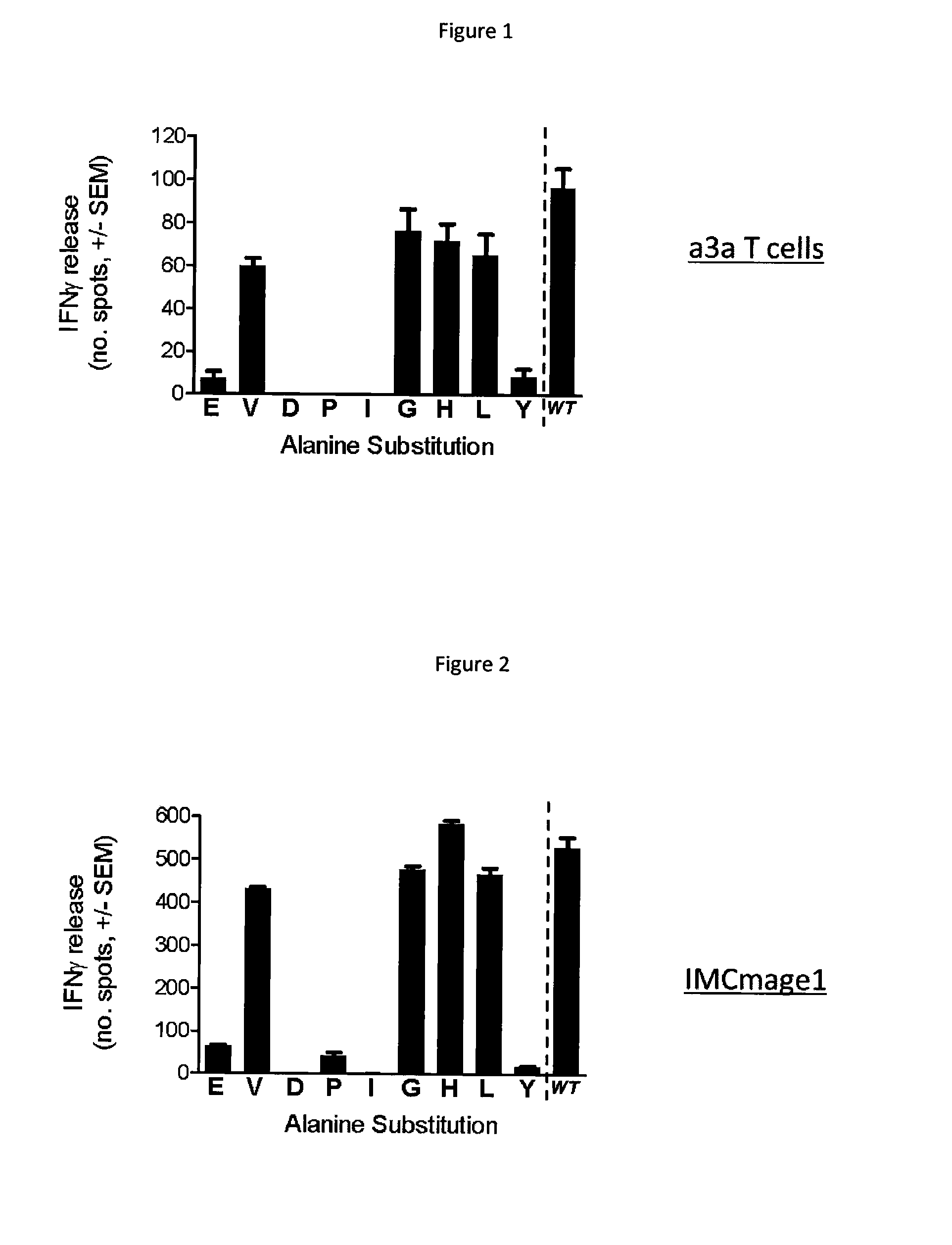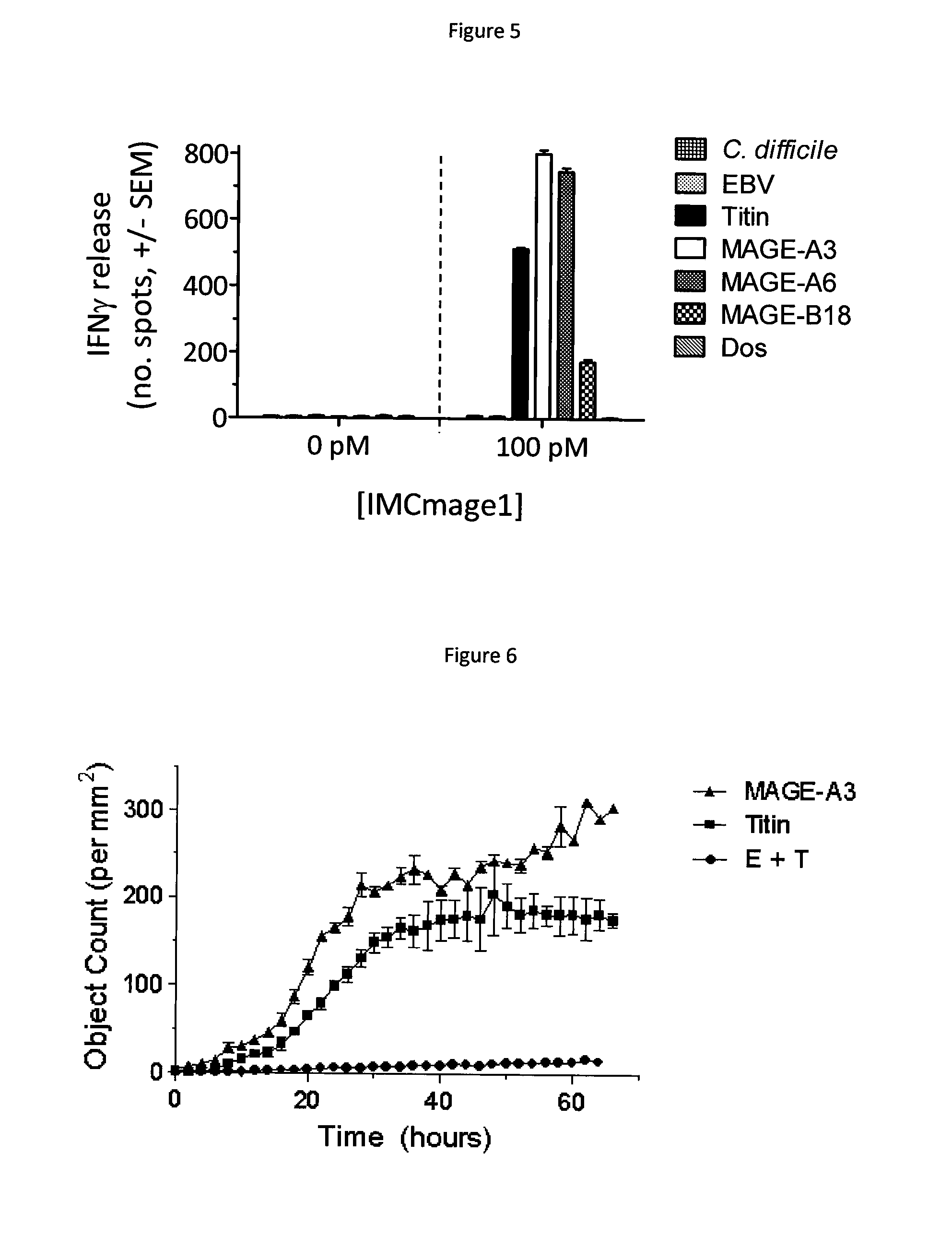Method for predicting the off-target biding of a peptide which binds to a target peptide presented by a major histocompatibility complex
a histocompatibility complex and peptide technology, applied in the field of methods for predicting the off-target biding of a peptide which binds to a target peptide presented by a major histocompatibility complex, can solve the problems of large number of peptides, difficult process, and unwanted side effects
- Summary
- Abstract
- Description
- Claims
- Application Information
AI Technical Summary
Benefits of technology
Problems solved by technology
Method used
Image
Examples
example 1
[0097]The target MHC presented peptide used in this example is derived from human cancer testis antigen MAGE A3 and has the following amino acid sequence; EVDPIGHLY. MAGE A3 peptide is presented on antigen presenting cells in the context of HLA-A*01.
[0098]The binding peptide used in this example may comprise a modified T cell receptor (TCR) which has been engineered to possess enhanced affinity for MAGE A3 peptide. Methods to produce affinity enhanced TCRs are known in the art (for example, phage display WO 03 / 020763). The native MAGE A3 TCR was obtained from a MAGE A3 T cell clone, as described in W02012 / 013913. Two versions of the modified MAGE A3 TCR are used. A moderately affinity enhanced version, expressed by transduced T cells (termed a3a T cells) as described in WO2012 / 013913, and a high affinity version, produced as a soluble protein fused to a T cell activating anti-CD3 fragment (termed IMCmage1), according to the method of WO2010 / 133828.
1.1 Identification of the Binding M...
example 2
[0144]The target MHC-presented peptide used in this example is derived from human cancer testis antigen NY-ESO-1 and has the following amino acid sequence; SLLMWITQC. NY-ESO-1 peptide is presented on antigen presenting cells in the context of HLA-A*02.
[0145]The binding peptide used in this example may comprise a modified T cell receptor (TCR) fusion protein which has been engineered to possess enhanced affinity for NY-ESO-1 peptide, and is termed ImmTAC-NYESO in this example. Production of such fusion proteins is described in McCormack et al, 2013, Cancer Immunol Immunother, 62 (4):773-85 and Liddy et al, 2012, Nat Med, 8:980-987.
2.1 Identification of the Binding Motif by Substitution with alanine
[0146]Variants of the native NY-ESO-1 peptide were obtained in which each amino acid position was sequentially replaced with alanine, as shown below (in each case the alanine substitution is underlined). Peptides were obtained from Peptide Protein Research Limited, UK.
ALLMWITQCSALMWITQCSLAM...
PUM
| Property | Measurement | Unit |
|---|---|---|
| size | aaaaa | aaaaa |
| cross reactivity | aaaaa | aaaaa |
| phase contrast images | aaaaa | aaaaa |
Abstract
Description
Claims
Application Information
 Login to View More
Login to View More - R&D
- Intellectual Property
- Life Sciences
- Materials
- Tech Scout
- Unparalleled Data Quality
- Higher Quality Content
- 60% Fewer Hallucinations
Browse by: Latest US Patents, China's latest patents, Technical Efficacy Thesaurus, Application Domain, Technology Topic, Popular Technical Reports.
© 2025 PatSnap. All rights reserved.Legal|Privacy policy|Modern Slavery Act Transparency Statement|Sitemap|About US| Contact US: help@patsnap.com



